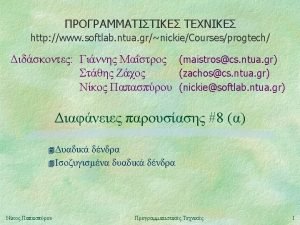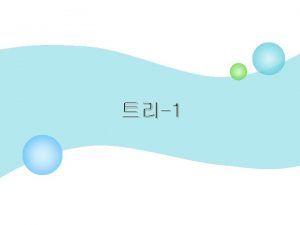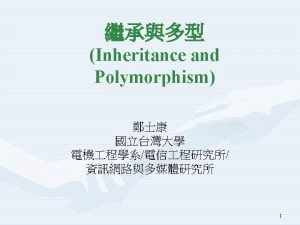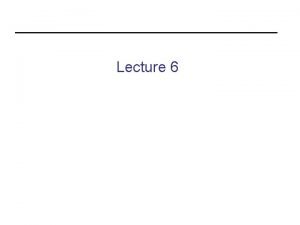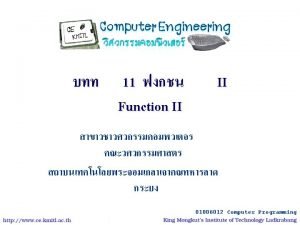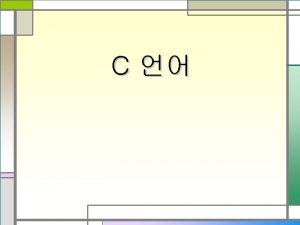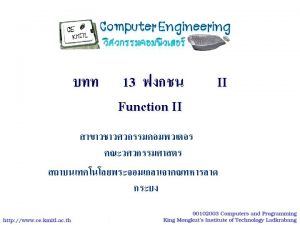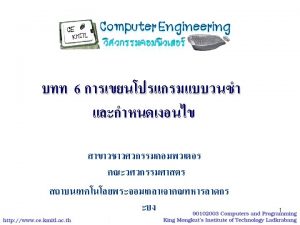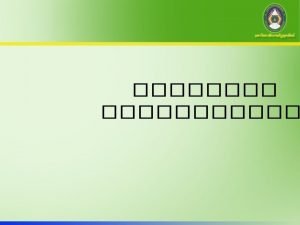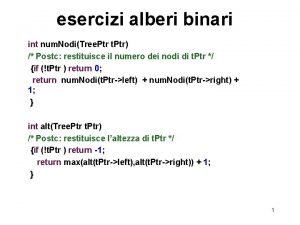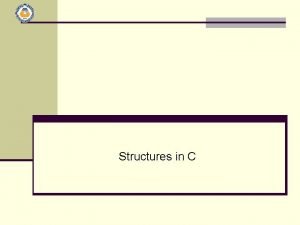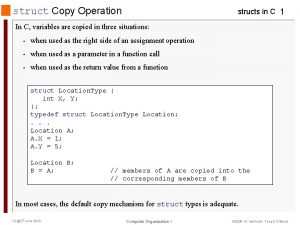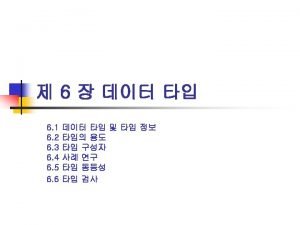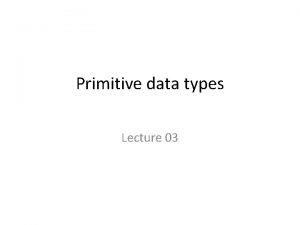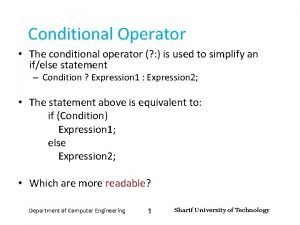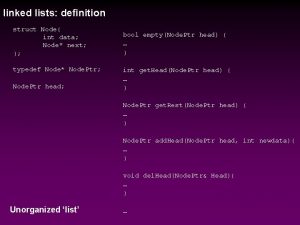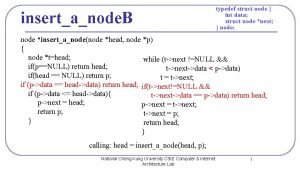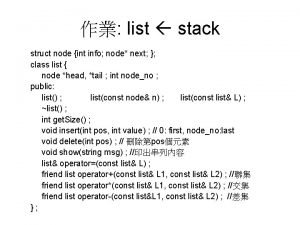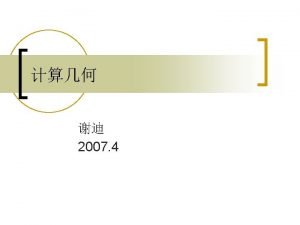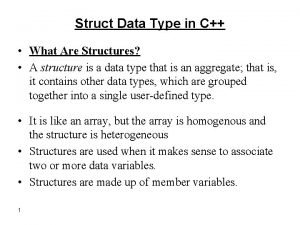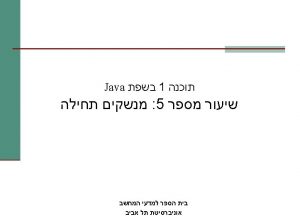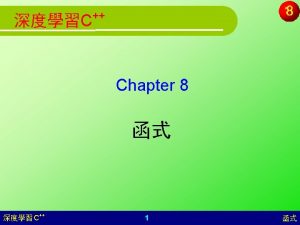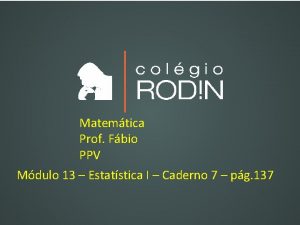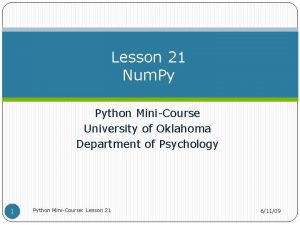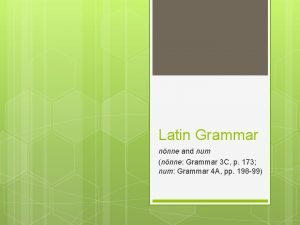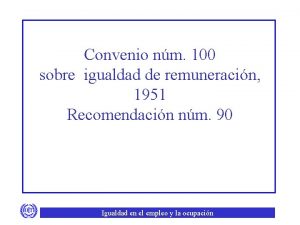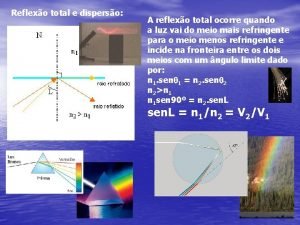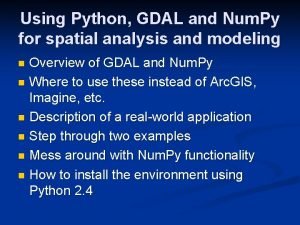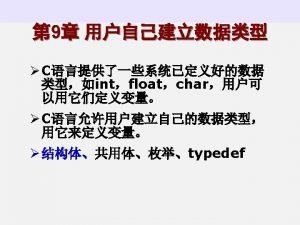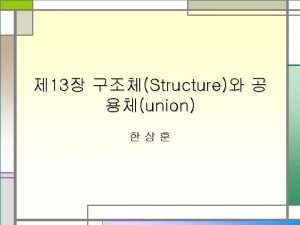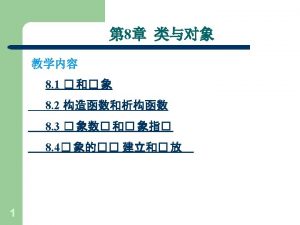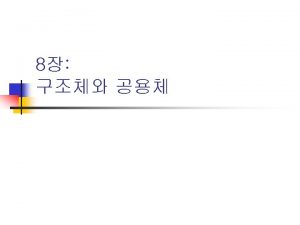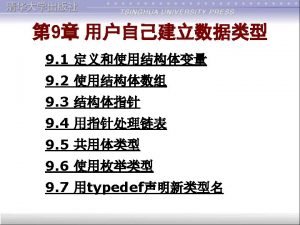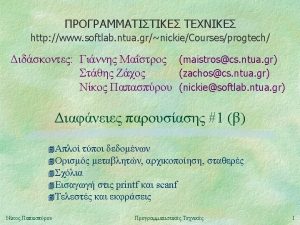1 struct Student int num char name20 struct









![其它说明: 1) 不要误认为凡是结构体类型都有相同的结构。 例: struct Student { int num; char name[20]; }; struct Student 其它说明: 1) 不要误认为凡是结构体类型都有相同的结构。 例: struct Student { int num; char name[20]; }; struct Student](https://slidetodoc.com/presentation_image_h/305df6ceb13a9ef8959175e22de067c7/image-10.jpg)

![3) 成员的引用相当普通的变量(. 成员运算符) 例: struct S { int num; char name[20]; }s 1, s 3) 成员的引用相当普通的变量(. 成员运算符) 例: struct S { int num; char name[20]; }s 1, s](https://slidetodoc.com/presentation_image_h/305df6ceb13a9ef8959175e22de067c7/image-12.jpg)



![2、结构体变量的初始化 定义时指定初始值 例1: struct Student { int num; char name[20]; char sex; int age; 2、结构体变量的初始化 定义时指定初始值 例1: struct Student { int num; char name[20]; char sex; int age;](https://slidetodoc.com/presentation_image_h/305df6ceb13a9ef8959175e22de067c7/image-16.jpg)
![例2: struct Student { int num; char name[20]; char sex; int age; float score; 例2: struct Student { int num; char name[20]; char sex; int age; float score;](https://slidetodoc.com/presentation_image_h/305df6ceb13a9ef8959175e22de067c7/image-17.jpg)






![struct Student { int num; char name[20]; char sex; Date birthday; float score; }student struct Student { int num; char name[20]; char sex; Date birthday; float score; }student](https://slidetodoc.com/presentation_image_h/305df6ceb13a9ef8959175e22de067c7/image-24.jpg)


![1、定义结构体数组 三种方式: 方式 1: struct Student { int num; char name[20]; char sex; int 1、定义结构体数组 三种方式: 方式 1: struct Student { int num; char name[20]; char sex; int](https://slidetodoc.com/presentation_image_h/305df6ceb13a9ef8959175e22de067c7/image-27.jpg)
![方式 2: struct Student { int num; char name[20]; char sex; int age; float 方式 2: struct Student { int num; char name[20]; char sex; int age; float](https://slidetodoc.com/presentation_image_h/305df6ceb13a9ef8959175e22de067c7/image-28.jpg)
![方式 3: struct { int num; char name[20]; char sex; int age; float score; 方式 3: struct { int num; char name[20]; char sex; int age; float score;](https://slidetodoc.com/presentation_image_h/305df6ceb13a9ef8959175e22de067c7/image-29.jpg)
![2、结构体数组的初始化 方式: 定义数组={初值表列}; 例: struct Student { int num; char name[20]; char sex; int 2、结构体数组的初始化 方式: 定义数组={初值表列}; 例: struct Student { int num; char name[20]; char sex; int](https://slidetodoc.com/presentation_image_h/305df6ceb13a9ef8959175e22de067c7/image-30.jpg)

![• 定义数组stu时, 也可以不指定元素个数。 即写成以下形式: struct Student { int num; char name[20]; char sex; • 定义数组stu时, 也可以不指定元素个数。 即写成以下形式: struct Student { int num; char name[20]; char sex;](https://slidetodoc.com/presentation_image_h/305df6ceb13a9ef8959175e22de067c7/image-32.jpg)



![统计得票: for(i=0; i<10; i++) { cin>>leader_name; for(j=0; j<3; j++) if(leader_name==leader[j]. name) leader[j]. count++; } 统计得票: for(i=0; i<10; i++) { cin>>leader_name; for(j=0; j<3; j++) if(leader_name==leader[j]. name) leader[j]. count++; }](https://slidetodoc.com/presentation_image_h/305df6ceb13a9ef8959175e22de067c7/image-36.jpg)








































![全局结构体类型和变量声明: 其中一成员为共用体类型和变量的声明; struct { int num; char name[10]; char sex; char job; union P 全局结构体类型和变量声明: 其中一成员为共用体类型和变量的声明; struct { int num; char name[10]; char sex; char job; union P](https://slidetodoc.com/presentation_image_h/305df6ceb13a9ef8959175e22de067c7/image-77.jpg)
![也可以这样声明: (好的声明) 先声明共同体类型, 再全局声明结构体类型和变量。 union P { int grade; char position[10]; }; struct Data 也可以这样声明: (好的声明) 先声明共同体类型, 再全局声明结构体类型和变量。 union P { int grade; char position[10]; }; struct Data](https://slidetodoc.com/presentation_image_h/305df6ceb13a9ef8959175e22de067c7/image-78.jpg)
![if(person[i]. job=='s') cin>>person[i]. category. grade; else if (person[i]. job=='t') cin>>person[i]. category. position; ————— if if(person[i]. job=='s') cin>>person[i]. category. grade; else if (person[i]. job=='t') cin>>person[i]. category. position; ————— if](https://slidetodoc.com/presentation_image_h/305df6ceb13a9ef8959175e22de067c7/image-79.jpg)










- Slides: 89









![其它说明 1 不要误认为凡是结构体类型都有相同的结构 例 struct Student int num char name20 struct Student 其它说明: 1) 不要误认为凡是结构体类型都有相同的结构。 例: struct Student { int num; char name[20]; }; struct Student](https://slidetodoc.com/presentation_image_h/305df6ceb13a9ef8959175e22de067c7/image-10.jpg)
其它说明: 1) 不要误认为凡是结构体类型都有相同的结构。 例: struct Student { int num; char name[20]; }; struct Student 1 { int num; int age; }; //24 B //8 B

![3 成员的引用相当普通的变量 成员运算符 例 struct S int num char name20 s 1 s 3) 成员的引用相当普通的变量(. 成员运算符) 例: struct S { int num; char name[20]; }s 1, s](https://slidetodoc.com/presentation_image_h/305df6ceb13a9ef8959175e22de067c7/image-12.jpg)
3) 成员的引用相当普通的变量(. 成员运算符) 例: struct S { int num; char name[20]; }s 1, s 2; 使用: s 1. num=20; strcpy(s 1. name, "Li. Ming"); s 2. num=21; strcpy(s 2. name, "Zhang. Hua");

4) 成员也可是结构体变量 例:struct Date { int month; int day; int year; }; struct Student { int num; char name[20]; char sex; int age; Date birthday; char addr[30]; }student 1, student 2;

student 1, student 2 内存分配分别为: 4 B+20 B+1 B+4 B+3*4 B+30 B

![2结构体变量的初始化 定义时指定初始值 例1 struct Student int num char name20 char sex int age 2、结构体变量的初始化 定义时指定初始值 例1: struct Student { int num; char name[20]; char sex; int age;](https://slidetodoc.com/presentation_image_h/305df6ceb13a9ef8959175e22de067c7/image-16.jpg)
2、结构体变量的初始化 定义时指定初始值 例1: struct Student { int num; char name[20]; char sex; int age; float score; char addr[30]; }student 1={10001, "Zhang Xin", 'M', 19, 90. 5, "Shanghai"};
![例2 struct Student int num char name20 char sex int age float score 例2: struct Student { int num; char name[20]; char sex; int age; float score;](https://slidetodoc.com/presentation_image_h/305df6ceb13a9ef8959175e22de067c7/image-17.jpg)
例2: struct Student { int num; char name[20]; char sex; int age; float score; char addr[30]; }; Student student 2={10002, "Wang Li", 'F', 20, 98, "Beijing"};






例7. 1 引用结构体变量中的成员。 #include <iostream> using namespace std; struct Date { int month; int day; int year; };
![struct Student int num char name20 char sex Date birthday float score student struct Student { int num; char name[20]; char sex; Date birthday; float score; }student](https://slidetodoc.com/presentation_image_h/305df6ceb13a9ef8959175e22de067c7/image-24.jpg)
struct Student { int num; char name[20]; char sex; Date birthday; float score; }student 1, student 2= {10002, "Wang Li", 'f', 5, 23, 1982, 89. 5};

int main( ) 运行结果如下: 10002 { Wang Li student 1=student 2; f cout<<student 1. num<<endl; cout<<student 1. name<<endl; 5/23/1982 89. 5 cout<<student 1. sex<<endl; cout<<student 1. birthday. month<<'/' <<student 1. birthday. day<<'/' <<student 1. birthday. year<<endl; cout<<student 1. score<<endl; return 0; }

![1定义结构体数组 三种方式 方式 1 struct Student int num char name20 char sex int 1、定义结构体数组 三种方式: 方式 1: struct Student { int num; char name[20]; char sex; int](https://slidetodoc.com/presentation_image_h/305df6ceb13a9ef8959175e22de067c7/image-27.jpg)
1、定义结构体数组 三种方式: 方式 1: struct Student { int num; char name[20]; char sex; int age; float score; char addr[30]; }; Student stu[3];
![方式 2 struct Student int num char name20 char sex int age float 方式 2: struct Student { int num; char name[20]; char sex; int age; float](https://slidetodoc.com/presentation_image_h/305df6ceb13a9ef8959175e22de067c7/image-28.jpg)
方式 2: struct Student { int num; char name[20]; char sex; int age; float score; char addr[30]; }stu[3];
![方式 3 struct int num char name20 char sex int age float score 方式 3: struct { int num; char name[20]; char sex; int age; float score;](https://slidetodoc.com/presentation_image_h/305df6ceb13a9ef8959175e22de067c7/image-29.jpg)
方式 3: struct { int num; char name[20]; char sex; int age; float score; char addr[30]; }stu[3];
![2结构体数组的初始化 方式 定义数组初值表列 例 struct Student int num char name20 char sex int 2、结构体数组的初始化 方式: 定义数组={初值表列}; 例: struct Student { int num; char name[20]; char sex; int](https://slidetodoc.com/presentation_image_h/305df6ceb13a9ef8959175e22de067c7/image-30.jpg)
2、结构体数组的初始化 方式: 定义数组={初值表列}; 例: struct Student { int num; char name[20]; char sex; int age; float score; char addr[30]; }stu[3]={{10101, "Li Lin", 'M', 18, 87. 5, "103 Beijing Road"}, {10102, "Zhang Fun", 'M', 19, 99, "130 Shanghai Road"}, {10104, "Wang Min", 'F', 20, 78. 5, "1010, Zhongshan Road"}};

![定义数组stu时 也可以不指定元素个数 即写成以下形式 struct Student int num char name20 char sex • 定义数组stu时, 也可以不指定元素个数。 即写成以下形式: struct Student { int num; char name[20]; char sex;](https://slidetodoc.com/presentation_image_h/305df6ceb13a9ef8959175e22de067c7/image-32.jpg)
• 定义数组stu时, 也可以不指定元素个数。 即写成以下形式: struct Student { int num; char name[20]; char sex; int age; float score; char addr[30]; }stu[ ]={{10101, "Li Lin", 'M', 18, 87. 5, "103 Beijing Road"}, {10102, "Zhang Fun", 'M', 19, 99, "130 Shanghai Road"}, {10104, "Wang Min", 'F', 20, 78. 5, "1010, Zhongshan Road"}};


统计得票: 运行: Zhang↙ for(i=0; i<10; i++) Li↙ { Fun↙ cin>>leader_name; Li↙ for(j=0; j<3; j++) Zhang↙ if(strcmp(leader_name, leader[j]. name) Li↙ ==0) Zhang↙ Li↙ leader[j]. count++; Fun↙ } 输出得票: for(i=0; i<3; i++) { cout<<leader[i]. name<<": " <<leader[i]. count<<endl; } Wang↙ Li: 4 Zhang: 3 Fun: 2

修改程序: (用字符串变量) 全局结构体类型声明: struct Person { string name; int count; }; 定义结构体变量, 但不能初始化: Person leader[3]; for(i=0; i<3; i++) { cin>>leader[i]. name; leader[i]. count=0; } string leader_name;
![统计得票 fori0 i10 i cinleadername forj0 j3 j ifleadernameleaderj name leaderj count 统计得票: for(i=0; i<10; i++) { cin>>leader_name; for(j=0; j<3; j++) if(leader_name==leader[j]. name) leader[j]. count++; }](https://slidetodoc.com/presentation_image_h/305df6ceb13a9ef8959175e22de067c7/image-36.jpg)
统计得票: for(i=0; i<10; i++) { cin>>leader_name; for(j=0; j<3; j++) if(leader_name==leader[j]. name) leader[j]. count++; } 输出得票: for(i=0; i<3; i++) { cout<<leader[i]. name<<": " <<leader[i]. count<<endl; }




2)赋初值 Student student 1; Student *p; p=&student 1; (指向确定) 3)引用成员 student 1. num=98001 (*p). num=98001 注意: 括号不能省略。




输出成员值: (三种方式) cout<<stu. num<<" " <<stu. name<<" " <<stu. sex<<" "<<stu. score<<endl; cout<<(*p). num<<" "<<(*p). name<<" " <<(*p). sex<<" "<<(*p). score<<endl; cout<<p->num<<" "<<p->name<<" " <<p->sex<<" "<<p->score<<endl;




例:struct Student { long num; float score; Student *next; }; Student *head; 1)2 人链表 a) 31001, 89. 5 b) 31003, 90 。 2) 3 人链表 a) 31001, 89. 5 b) 31003, 90 c) 31007, 85

链表结点的结构体类型: struct Student { long num; float score; Student *next; }; 链表的表头: Student *head; Part 1 Part 2

NULL


int main( ) { Student a, b, c, *head, *p; a. num=31001; a. score=89. 5; b. num=31003; b. score=90; c. num=31007; c. score=85; head=&a; a. next=&b; b. next=&c; c. next=NULL;

p=head; do { cout<<p->num<<" "<<p->score<<endl; p=p->next; } while(p!=NULL); return 0; }

















小结 2、链表 1)链表结点类型声明 struct A 1 { int a; char b; A 1 *next; }; A 1 *head; 2)声明链表结点变量 A 1 a, b; 3)a, b构成链 head=&a; a. next=&b; b. next=NULL; 4)链输出(结点循环) A 1 *p; p=head; while(p!=NULL) { cout<<p->a<<p->b<<endl; p=p->next; }


小结 4、new和delete( malloc(); free(); ) 1) int *p; p=new int; cin>>*p; cout<<*p; delete p; 2) float *p; p=new float(1. 2); cout<<*p; delete p; 3) char *p; p=new char[10]; delete [ ]p;




![全局结构体类型和变量声明 其中一成员为共用体类型和变量的声明 struct int num char name10 char sex char job union P 全局结构体类型和变量声明: 其中一成员为共用体类型和变量的声明; struct { int num; char name[10]; char sex; char job; union P](https://slidetodoc.com/presentation_image_h/305df6ceb13a9ef8959175e22de067c7/image-77.jpg)
全局结构体类型和变量声明: 其中一成员为共用体类型和变量的声明; struct { int num; char name[10]; char sex; char job; union P { int grade; char position[10]; }category; }person[2];
![也可以这样声明 好的声明 先声明共同体类型 再全局声明结构体类型和变量 union P int grade char position10 struct Data 也可以这样声明: (好的声明) 先声明共同体类型, 再全局声明结构体类型和变量。 union P { int grade; char position[10]; }; struct Data](https://slidetodoc.com/presentation_image_h/305df6ceb13a9ef8959175e22de067c7/image-78.jpg)
也可以这样声明: (好的声明) 先声明共同体类型, 再全局声明结构体类型和变量。 union P { int grade; char position[10]; }; struct Data { int num; char name[10]; char sex; char job; P category; }; Data person[2];
![ifpersoni jobs cinpersoni category grade else if personi jobt cinpersoni category position if if(person[i]. job=='s') cin>>person[i]. category. grade; else if (person[i]. job=='t') cin>>person[i]. category. position; ————— if](https://slidetodoc.com/presentation_image_h/305df6ceb13a9ef8959175e22de067c7/image-79.jpg)
if(person[i]. job=='s') cin>>person[i]. category. grade; else if (person[i]. job=='t') cin>>person[i]. category. position; ————— if (person[i]. job== 's') cout<<person[i]. num <<setw(6) <<person[i]. name<<" " <<person[i]. sex <<" "<<person[i]. job <<setw(10)<<person[i]. category. grade<<endl; else cout<<person[i]. num <<setw(6)<<person[i]. name<<" " <<person[i]. sex<<" " <<person[i]. job <<setw(10)<<person[i]. category. position<<endl;





7. 4 用typedef声明类型 用typedef声明一个新的类型名来代替已有的类型名。 例1: typedef int INTEGER; typedef float REAL; 这样, 以下两行等价: ① int i, j; float a, b; ② INTEGER i, j; REAL a, b;

例2: typedef int COUNT; COUNT i, j; 例3: typedef struct { int month; int day; int year; }DATE; //DATE类型名, 非变量名 可用DATE定义变量: DATE birthday; //结构体变量 DATE *p; //结构体指针变量




小结 2、枚举类型,枚举常量 enum weekday{sun, mon, tue, wed, thu, fri, sat}; 3、枚举变量 weekday workday, week_end; 4、 typedef struct { int month; int day; int year; }DATE; DATE a 1, b 1; //DATE类型名, 非变量名
 Int sum(int a int n) int sum=0 i
Int sum(int a int n) int sum=0 i Int main() int num=4
Int main() int num=4 Typedef struct tree int info
Typedef struct tree int info Struct node int data struct node* next
Struct node int data struct node* next Typedef struct tree int info struct *left
Typedef struct tree int info struct *left Typedef struct tree int info struct *left
Typedef struct tree int info struct *left Include
Include Int main(int argc, char** argv)
Int main(int argc, char** argv) Public int divide(int a int b)
Public int divide(int a int b) Int max(int x int y)
Int max(int x int y) Interface calculator public int add(int a int b) class test
Interface calculator public int add(int a int b) class test Public void drawsquare(int x, int y, int len)
Public void drawsquare(int x, int y, int len) Struct student
Struct student Struct student char *name
Struct student char *name Int num;
Int num; 1 num
1 num Num++ vs ++num
Num++ vs ++num Char char slide
Char char slide Const char * vs char * const
Const char * vs char * const Int num
Int num Void func(int num)
Void func(int num) Int num
Int num Num 2
Num 2 Int num
Int num Int num
Int num Int num
Int num Esercizi alberi binari
Esercizi alberi binari Struct char name 25 charlanguage 10
Struct char name 25 charlanguage 10 C copy struct to struct
C copy struct to struct Int (*)(bool, char)
Int (*)(bool, char) Const arduino
Const arduino V int
V int Bool 1
Bool 1 Int char float
Int char float Int ival char cval
Int ival char cval Char ch int i scanf c&i
Char ch int i scanf c&i Java double 범위
Java double 범위 Char short long
Char short long Long char
Long char Int float
Int float Int char float
Int char float Struct node int data
Struct node int data Struct point int x y
Struct point int x y Typedef struct node
Typedef struct node Typedef struct tree int info
Typedef struct tree int info Struct node int i float j
Struct node int i float j Nodenext
Nodenext Struct point int x y
Struct point int x y Struct node int i float j
Struct node int i float j Interface myinterface int foo(int x)
Interface myinterface int foo(int x) Void
Void #include stdio.h void main()
#include stdio.h void main() Int max int min c++
Int max int min c++ 7팩토리얼
7팩토리얼 Voidswap
Voidswap H
H Tell me about your last weekend
Tell me about your last weekend Class maths student student1 class student string name
Class maths student student1 class student string name Student learning space singapore
Student learning space singapore What did you do in london last weekend
What did you do in london last weekend National student clearinghouse student tracker
National student clearinghouse student tracker Clearinghouse student tracker
Clearinghouse student tracker Freckle student dashboard
Freckle student dashboard Good morning students.
Good morning students. Um passaro sobrevoa em linha reta
Um passaro sobrevoa em linha reta Quem foi o profeta que voou no redemoinho
Quem foi o profeta que voou no redemoinho Uncisal num certo dia do mes de novembro
Uncisal num certo dia do mes de novembro Num py
Num py Escola cinica
Escola cinica Num. 1
Num. 1 Justifique a frase
Justifique a frase Uma chapa de zinco tem area de 8cm a 20c
Uma chapa de zinco tem area de 8cm a 20c Var num
Var num Num % 2
Num % 2 Oseias hijo de num
Oseias hijo de num Num in latin
Num in latin O cidadão norte americano desperta num leito
O cidadão norte americano desperta num leito Numbers 23v23
Numbers 23v23 Sen(a+b)+sen(a-b)
Sen(a+b)+sen(a-b) Convenio sobre igualdad de remuneración, 1951 (núm. 100)
Convenio sobre igualdad de remuneración, 1951 (núm. 100) Uma pessoa encontra se deitada num trampolim
Uma pessoa encontra se deitada num trampolim Nonne num
Nonne num Num py
Num py Havia um elfo encantado que morava num pé de caqui
Havia um elfo encantado que morava num pé de caqui Arranjo analise combinatoria
Arranjo analise combinatoria Gdr ondes
Gdr ondes Num % 2
Num % 2 Num 15
Num 15




